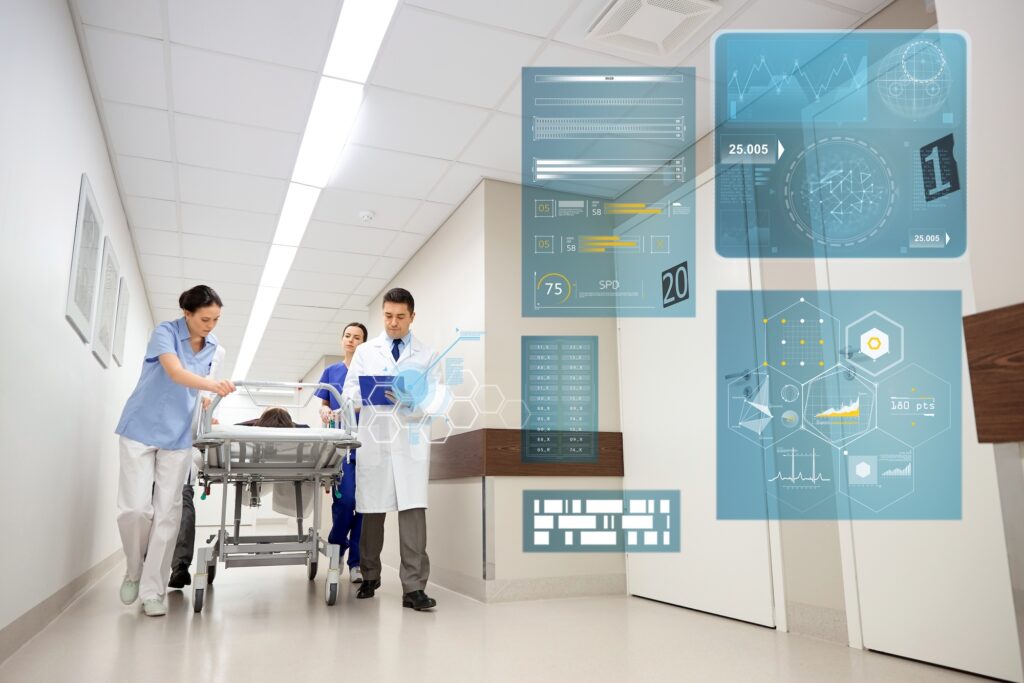With the advent of smart technologies such as artificial intelligence (AI), big data, and the Internet of Things (IoT), healthcare organizations are increasingly empowered to enhance and advance patient care operations.
Smart technology can help healthcare professionals with many critical tasks, ranging from accomplishing administrative tasks more efficiently to creating personalized treatment plans for each patient and even performing life-saving surgical procedures remotely. The huge demand for smart technology in healthcare settings proves how effective and transformative it is: The global market size of the Internet of Medical Things (IoMT) is expected to reach US$176.8 billion by 2026, while the AI healthcare market is projected to reach US$187 billion by 2030. In the coming years, smart technology will be ubiquitous in healthcare operations, and it’s vital to understand what it is and how it can positively impact the industry.
This article examines how smart technology is changing and improving modern healthcare. It also seeks to explain how AI and IoT can assist healthcare professionals and organizations in delivering improved, smarter, and more efficient patient care services.
How technology is transforming healthcare
Smart technology enables telemedicine services
Telemedicine, which enables physicians and other healthcare professionals to communicate with and monitor patients remotely, is powered by smart technology. Telemedicine has become part of the norm and is expected to grow in popularity. In fact, the US telemedicine market size is expected to reach US$160.45 billion in 2034.
At the height of the global pandemic, patients who need to consult with their doctors for chronic illnesses were able to do so in the comfort and safety of their homes, reducing their risk of acquiring COVID-19.
Aside from helping patients get the help they need for chronic illnesses, telemedicine is also able to help patients with mental health struggles. During the pandemic, the advantages of telehealth sessions to help patients with anxiety and depression have been well-documented, and even after the pandemic, mental health services delivered via telehealth continue to be beneficial.
In one 2024 study, researchers found that brief cognitive behavioral therapy (BCBT) that was provided to patients via telehealth reduced suicidal ideation and attempts in high-risk adults. When researchers compared telehealth-provided BCBT with present-centered therapy, they discovered that the former reduced the risk of suicide attempts by 41%.
Today, telemedicine is currently being used to extend care services to airplane riders who need emergency in-flight medical assistance and even to animals in need of veterinary visits.
Drug development
Developing innovative drugs that can cure and prevent illnesses requires dealing with big data, a complex and time-consuming endeavor that poses many challenges to drug developers, researchers, and scientists. However, this is an area in which AI models such as large language models (LLMs) and AI tools shine.
AI transforms drug development into an efficient process, empowering researchers to make innovative drug combinations and enhancing drug designs. In 2020, the first AI-designed drug molecule was used in a drug that treats obsessive-compulsive disorder (OCD) in human trials. Through AI, the drug was able to swiftly move to human trials — instead of a five-year development period, it was reduced to just one. More recently, scientists have used an AI model dubbed SyntheMol to create structures and chemical recipes for six new drugs that can destroy antibiotic-resistant bacteria strains.
Remote patient monitoring
Healthcare thrives on data and monitoring, and that is what smart technology is excellent at providing. IoMT devices can be used to connect different medical devices and sensors to provide accurate healthcare information that can be used to diagnose patient conditions and alert healthcare professionals of critical conditions in remote locations.
With IoMT devices, healthcare organizations can bolster patient safety, reduce the cost of services, and improve the accessibility of healthcare services. For example, doctors and nurses can use connected devices that track patients’ blood pressure, oxygen levels, and heart rates in real-time can be used by doctors and nurses to adjust treatments and provide specific guidance to patients that can help save their lives.
IoMT devices that provide accurate data can also be integrated with other analytics tools to give healthcare professionals improved insights into patients’ health, allowing them to detect illnesses more accurately and allocate healthcare resources more appropriately.
With smart technology, healthcare professionals, scientists, and researchers can make better, faster, and smarter decisions to enhance patient care experiences worldwide. The future of healthcare is bright and we look forward to seeing more advancements in this space.







